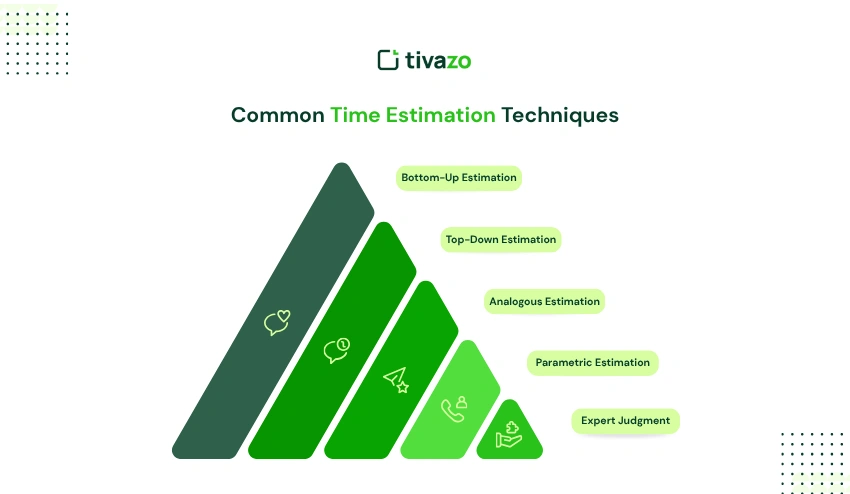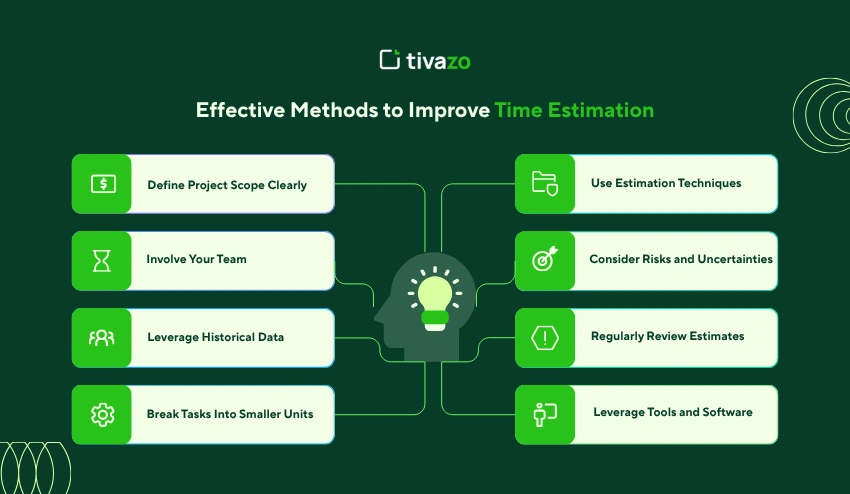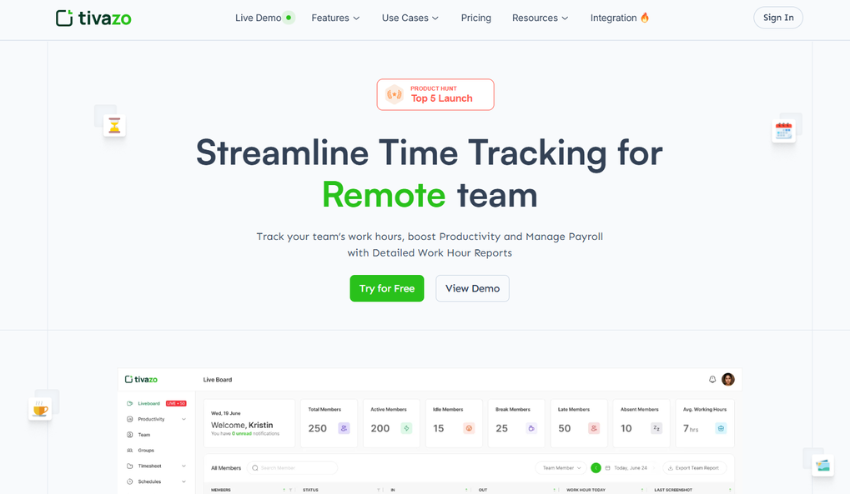Imagine starting a project with complete confidence, knowing exactly how long each task will take, how to allocate resources, and how to meet every deadline. Sounds ideal, right? Yet, many projects falter simply because accurate time estimation was overlooked.
Successful project planning is based on accurate time estimation. Whether it comes to project scheduling and resource planning, deadline management, and increased productivity, time estimates are right in order to facilitate the process smoothly and prevent expensive delays. Lack of it can cause even the most promising projects to go down the drain of missed deadlines and overworked staff.
Task duration estimation is an essential skill, no matter how small or large the team you are dealing with or the project you are engaged in. You can also be more precise in planning by knowing the amount of time each task will require, creating a realistic schedule, and completing the project on time. In this article, we will discuss effective tips, effective planning tools, and good tips to enable you to master time estimation in all projects.
What do you mean by time estimation?
Time estimation refers to the process of estimating the amount of time it will take to complete a particular task, project, or collection of activities. It is one of the most important parts of project scheduling and estimation of task durations and resources planning, which assists teams in planning their time and resources effectively. Proper time estimation will make sure that the projects remain on schedule, meet deadlines, and maximize productivity.
What is time estimation in project management?
Time estimation is a process of making predictions about the duration of time needed to complete tasks and milestones in a project or the whole project in project management. It is an important process during project scheduling, estimation of task duration, as well as resource planning, whereby projects are completed on time and within the budget.
Proper time estimation enables project managers to use resources in an efficient manner, to establish possible bottlenecks, and to make the overall planning more accurate. Such techniques as bottom-up estimation, analogous estimation, and parametric estimation are widely used to make estimates more reliable. Besides, the analysis of productivity and the reduction of risks of missing deadlines can be enhanced with the assistance of historical data and team input.
Learning how to estimate time in project management, teams will be able to plan their work, cope with workloads, and enhance the chances of project success.
Common Time Estimation Techniques
The proper time estimation is the key to successful project planning, and proper techniques can greatly enhance the project scheduling and estimating of the time spent on the project tasks. Knowledge of the best practices would enable the project managers to make resource allocation cost-effective and increase the accuracy of planning.

1. Bottom-Up Estimation
Bottom-up estimation divides a project into smaller, manageable tasks and estimates the time that each task would take. The approach enables the teams to estimate the total project time by adding up the estimates of each task, which enhances accuracy in planning and minimizes the chances of deadline violation.
This method is especially useful in complicated projects where a task analysis is necessary. Engaging the team members in estimating tasks will enable the project managers to use expert judgment and past data to make better resource planning and improve productivity in general.
📖Read More: Bottom-Up Estimating : 5 Powerful Tactics
2. Top-Down Estimation
Top-down estimation begins with a project schedule in general, and then it is broken down into the different tasks. It is a quicker method and is good in projects that are not very complicated, but it might not be as accurate as bottom-up estimation.
This approach is less detailed, but it could assist project managers in developing schedules and establishing expectations with stakeholders swiftly. Top-down estimation coupled with periodic reviews will make time estimation realistic, therefore enhancing management of tasks and minimizing delays.
3. Analogous Estimation
Analogous estimation involves the use of historical data from a project to estimate the duration of similar tasks in the current project. It saves time in planning and offers a baseline on which the project scheduling can be based, but it might not be very accurate in case the projects are very different.
The approach is especially effective when there is historical performance data that is reliable and accessible. Through evaluation of previous project results, the managers are able to improve productivity analysis and develop more realistic estimates of the duration of tasks.
4. Parametric Estimation
Parametric estimation is based on statistical computations in order to estimate project timelines. As an illustration, when a task takes 2 hours per unit, and the number is 50, then the total time is 100 hours. The technique is most effective where there is adequate historical data, which is measurable.
Parametric estimation offers a time estimation method that is systematic, and the project managers can predict the durations based on measurable values. It also helps in planning the resources and optimizing the schedules in order to keep the projects on schedule.
5. Expert Judgment
Expert judgment is where the help of senior professionals is sought to make estimations on the duration of the tasks. They can make their experience priceless on complicated or unknown projects, making time estimation more reliable.
The engagement of experts is also helpful in improving the scheduling of the project and distribution of resources, as possible risks can be identified in advance. Integration of professional judgment with past data and estimating methods will provide greater accuracy of planning and overall success of the project.
The appropriate time estimation methods will help change the project planning process, enhance the accuracy of task duration estimates, and minimize delays. Using these approaches and past data and wisdom, project managers are able to develop viable schedules that will help to optimize productivity and efficiency.
8 Effective Methods to Improve Time Estimation
The enhancement of time estimation is critical in the development of the proper project schedule and the increase in the accuracy of planning. Project managers can use the best practices to optimize the estimation of the duration of the tasks, enhance resource planning, and enhance the overall efficiency of the project.

1. Define Project Scope Clearly
The basis of the correct time estimation is a clear project scope definition. Project managers will have the ability to plan resources well and develop achievable timelines when all activities and deliverables are known in advance.
A clear scope can also be used to avoid scope creep, a frequent source of late deliveries and resource wastage. This enhances the general scheduling of projects and also makes sure that the teams are doing the right work at the right time.
Through scope review and clarification with the stakeholders and the team members, the managers can improve productivity analysis and have a good base to gauge the progress made during the project.
2. Involve Your Team
Involvement of the team in the time estimation allows one to get an idea about task complexities that may not be evident to the managers. The input of the team will result in a more realistic estimation of the duration of the task and accuracy in planning.
Possible risks, dependencies, and difficulties can be recognized by team members and allow for estimating facts based on the real-life situation, not on assumptions. This partnership also promotes accountability and supports the sense of owning timelines in projects.
Team meetings, feedback sessions could also help to fine-tune resource planning and project schedules so that timelines will be realistic and within the capability of the team.
3. Leverage Historical Data
Time estimation can be enhanced with the help of historical project data. Through analysis of previous projects, managers are able to determine the patterns, estimate similar tasks more precisely, and minimize the chances of mistakes.
Task duration estimation is also informed by historical data, and it is used to predict the project completion times more accurately. The practice facilitates accuracy in planning and enables the teams to learn through their past achievements and failures.
The database of historic project performance also improves productivity analysis because it allows the project managers to make decisions based on data and constantly improve their estimation process.
4. Break Tasks Into Smaller Units
Time estimation is enhanced by breaking down huge tasks into small and manageable ones. It is possible to assess each subtask separately, so it is easier to estimate times and resources.
It is a method that reinforces the time schedule of projects through the clarification of dependencies and the identification of possible bottlenecks at an early stage. It also enables more precise planning of resources and allocation of work among the team members.
Also, the division of tasks into smaller parts is beneficial as it helps to sustain productivity analysis and track the progress of the project, allowing the project manager to adjust accordingly.
5. Use Estimation Techniques
The use of structured estimation methods, such as bottom-up, analogous, or parametric estimation, improves the accuracy of time estimation. These techniques offer patterns of forecasting durations either in terms of experience, past data, or statistical estimates.
Both methods have advantages: bottom-up estimation is applicable to detailed projects, analogous estimation makes use of earlier projects, and parametric estimation makes use of quantifiable measures. Combining these methods enhances the estimation of task time and the entire planning process.
Application of estimation techniques also aids in planning resources that will be allocated in a realistic way so that tasks are allocated realistic time frames and the deadline is within reach.
6. Consider Risks and Uncertainties
Risks and uncertainties require accounting to have the right time estimation. Delays may be occasioned by unforeseen events or problems, and therefore, incorporating contingency buffers will make projects stay on schedule.
Early detection of possible risks will help in scheduling the projects better and avoiding inconveniences in the resource planning. It also enhances the accuracy of planning, which helps the teams to avoid unrealistic expectations.
The past project risk analysis and the lessons learned will allow managers to better estimate the time required to complete the task and enhance the productivity analysis.
7. Regularly Review Estimates
Projects are not static, and the estimation of time should be regularly reviewed. Regular updates of estimates on progress, new information, or scope adjustments make schedules realistic and actionable.
The regular reviews make the planning more accurate and enable the managers to proactively modify the project scheduling and resource planning. It is also a method that will not allow minor delays to add up to significant setbacks.
Regular evaluation helps sustain productivity evaluation so that teams can detect inefficiency and maximize productivity as the project moves forward.
8. Leverage Tools and Software
Time estimation can be enhanced by using such tools as Gantt charts, Critical Path Method (CPM), and software that helps to track the time. These tools allow visual timelines, display dependencies, and monitor the time actually used in tasks.
Technology assists in better performing the task duration estimation, resource planning, as well as enhancing the overall planning accuracy. The productivity analysis is also enhanced through automated tracking and reporting, which gives insights into future projects that may be implemented.
The application of these tools in the everyday processes will guarantee the data-driven estimation of time, its transparency, and flexibility to changing situations in a project.
These 8 methods can enhance the estimation of time, project scheduling, and task duration estimation dramatically. Project managers can use a combination of the clarity of scope, team engagement, historical data, risk management, and proper tools to deliver the project on time, ensure resource optimization, and improve productivity.
Tools and Techniques to Enhance Time Estimation
Time estimation and project scheduling could be much better in case the correct tools and techniques are used. These resources assist project managers in visualizing schedules, monitoring performances, and estimating the duration of tasks to achieve a superior project output.
1. Gantt Charts
Gantt charts give a diagrammatic way of depicting the project schedule or schedule of activities, including sequences, dependencies, and durations. They simplify the process of comprehending the relationship among tasks and increase the accuracy of planning and enhancing resource planning.
Gantt charts enable project managers to spot possible bottlenecks at an early stage, manage resources effectively, and make sure that the tasks are being accomplished within the time frame. Productivity analysis is also facilitated with the help of this tool, which puts emphasis on the progress of tasks and the completion rate.
2. Critical Path Method (CPM)
Critical Path Method (CPM) is used to determine the maximum path of interrelated activities, which gives the project an approximate time frame. Prioritizing the tasks enables the project managers to avoid delays and enhance the accuracy of the overall time estimation.
CPM is also used to optimize the planning of resources, as it suggests those tasks that need to be given priority. This method, combined with estimating the time spent on a task, will make sure that the projects are on schedule and that the deadlines are met in an efficient manner.
3. Time Tracking Software
Time tracking software measures the real time taken on the tasks and gives data that can be used to improve the time estimation in the future. Project managers can use tools such as Tivazo to measure the efficiency of the tasks and enhance the precision of the planning.

Through tracked data, teams are able to discover areas of improvement, scheduling of project optimization, and increased productivity analysis. This will help to make the future projects more realistic in estimation and be completed within the time that was allocated.
Conclusion
Time estimation is the key to effective project planning. With the help of the proper techniques, the involvement of the team, and the proper tools, the project managers will be able to make their time estimates more accurate, which will result in more successful project outcomes. It is important to remember that the correct time estimation is not merely predicting the future but organizing it.
Are you willing to use these time estimation strategies in your upcoming project?




